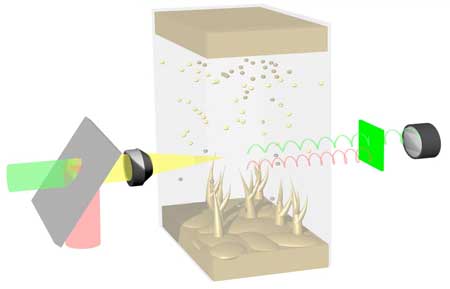 Material scientists use stimulated Raman scattering microscopy to observe -- for the first time -- ions moving in liquid electrolyte; findings could lead to improving battery safety while also increasing next-generation energy storage.
Material scientists use stimulated Raman scattering microscopy to observe -- for the first time -- ions moving in liquid electrolyte; findings could lead to improving battery safety while also increasing next-generation energy storage.
Jul 30th, 2018
Read more
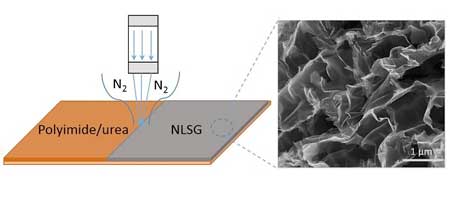 Laser-scribed disordered graphene significantly improves sodium-ion battery capacity.
Laser-scribed disordered graphene significantly improves sodium-ion battery capacity.
Jul 30th, 2018
Read more
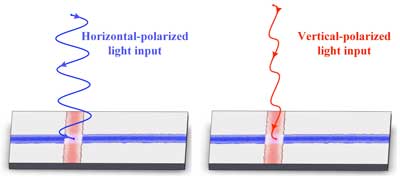 New findings have the potential to change how electronics process logic functions, the elementary building blocks of computing.
New findings have the potential to change how electronics process logic functions, the elementary building blocks of computing.
Jul 30th, 2018
Read more
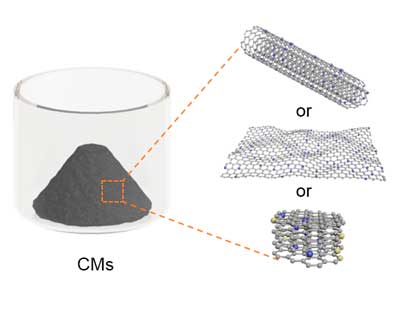 A research team proposes a simple, effective, and versatile method to prepare a series of functional carbin nanomaterials from small organic molecules by a transition metal assisted carbonization process.
A research team proposes a simple, effective, and versatile method to prepare a series of functional carbin nanomaterials from small organic molecules by a transition metal assisted carbonization process.
Jul 30th, 2018
Read more
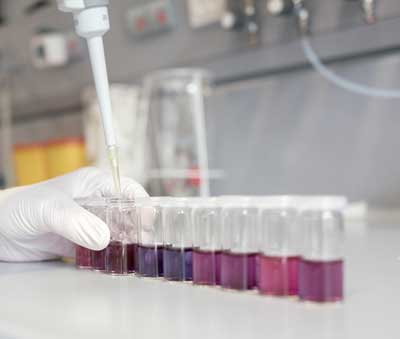 Chemists have developed a new method of observing the chemical reactions of individual silver nanoparticles in real time.
Chemists have developed a new method of observing the chemical reactions of individual silver nanoparticles in real time.
Jul 30th, 2018
Read more
 Physicists have developed a new methodology for determining the impact of screening effects on charge carrier mobility at the interface of complex material structures.
Physicists have developed a new methodology for determining the impact of screening effects on charge carrier mobility at the interface of complex material structures.
Jul 30th, 2018
Read more
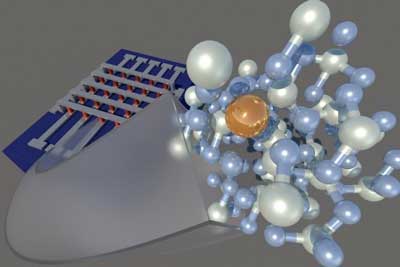 Researchers are examining tin as a silicon-friendly material to help create new cost-effective memory devices. The new candidate offers the same performance advantages of more commonly used elements such as copper or silver, yet is compatible with silicon.
Researchers are examining tin as a silicon-friendly material to help create new cost-effective memory devices. The new candidate offers the same performance advantages of more commonly used elements such as copper or silver, yet is compatible with silicon.
Jul 27th, 2018
Read more
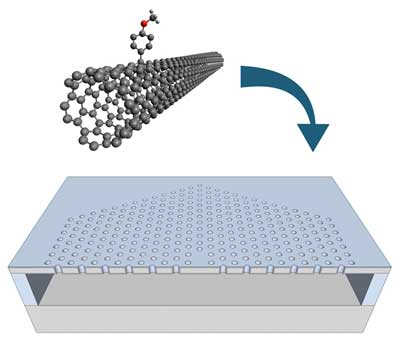 Carbon nanotubes coated onto a holey silicon substrate emit a superabundance of single particles of light.
Carbon nanotubes coated onto a holey silicon substrate emit a superabundance of single particles of light.
Jul 27th, 2018
Read more
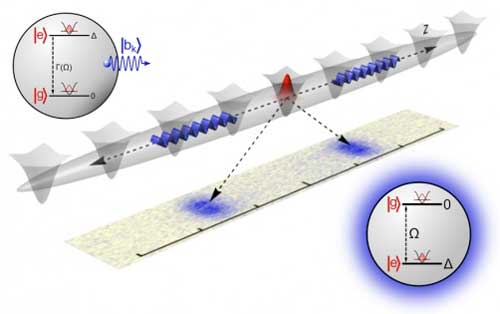 The research creates an alternative platform for advancing quantum physics applications.
The research creates an alternative platform for advancing quantum physics applications.
Jul 27th, 2018
Read more
 Researchers have created a new type of optical system. Their 'nano-hedgehogs of light', also known as optical skyrmions, set the stage for a new platform for information processing, transfer and storage applications.
Researchers have created a new type of optical system. Their 'nano-hedgehogs of light', also known as optical skyrmions, set the stage for a new platform for information processing, transfer and storage applications.
Jul 27th, 2018
Read more
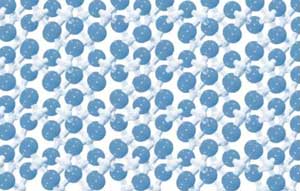 International group of researchers obtain new material from iron ore with application as a photocatalyst.
International group of researchers obtain new material from iron ore with application as a photocatalyst.
Jul 26th, 2018
Read more
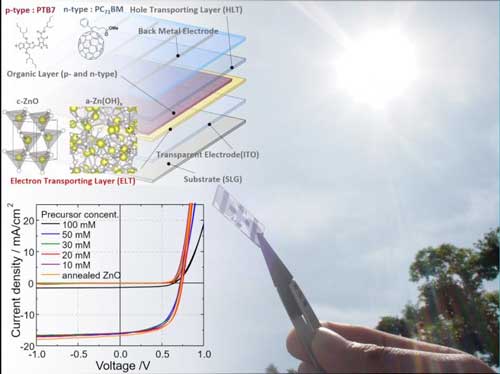 Researchers develop coating technique to create ceramic ultra-thin films using solution.
Researchers develop coating technique to create ceramic ultra-thin films using solution.
Jul 26th, 2018
Read more
 Theorists find mechanism behind nearly pure nanotubes from the unusual catalyst.
Theorists find mechanism behind nearly pure nanotubes from the unusual catalyst.
Jul 26th, 2018
Read more
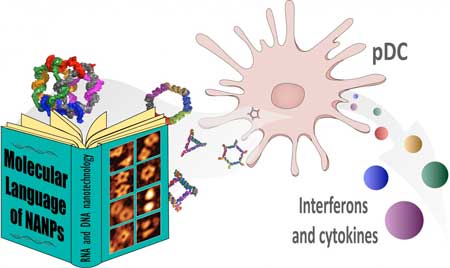 Particle-specific immune responses may be 'an alphabet for talking to the immune system'.
Particle-specific immune responses may be 'an alphabet for talking to the immune system'.
Jul 26th, 2018
Read more
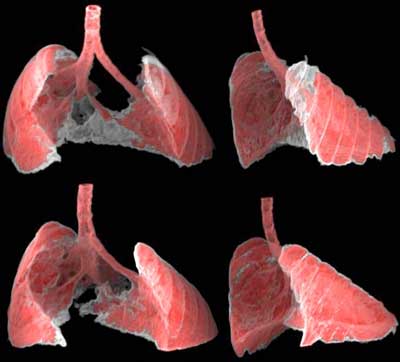 Researchers have devised strategies to eliminate senescent cells. Senescence is a cell program that is triggered by many types of damage and senescent cells are present in many diseases.
Researchers have devised strategies to eliminate senescent cells. Senescence is a cell program that is triggered by many types of damage and senescent cells are present in many diseases.
Jul 26th, 2018
Read more
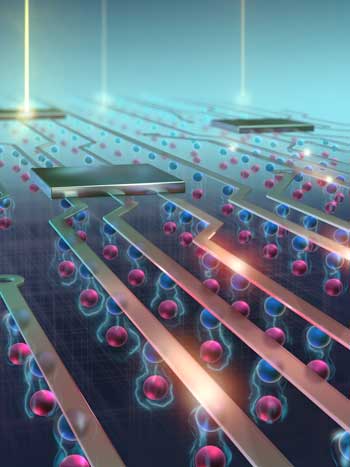 Scientists have developed a transistor based on excitons that is able to function at room temperature. This breakthrough could lead to a new breed of faster, more energy efficient and smaller electronics.
Scientists have developed a transistor based on excitons that is able to function at room temperature. This breakthrough could lead to a new breed of faster, more energy efficient and smaller electronics.
Jul 25th, 2018
Read more
 Material scientists use stimulated Raman scattering microscopy to observe -- for the first time -- ions moving in liquid electrolyte; findings could lead to improving battery safety while also increasing next-generation energy storage.
Material scientists use stimulated Raman scattering microscopy to observe -- for the first time -- ions moving in liquid electrolyte; findings could lead to improving battery safety while also increasing next-generation energy storage.















 Subscribe to our Nanotechnology News feed
Subscribe to our Nanotechnology News feed